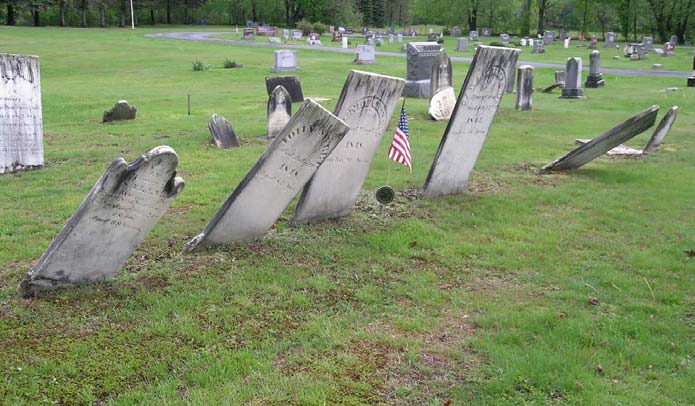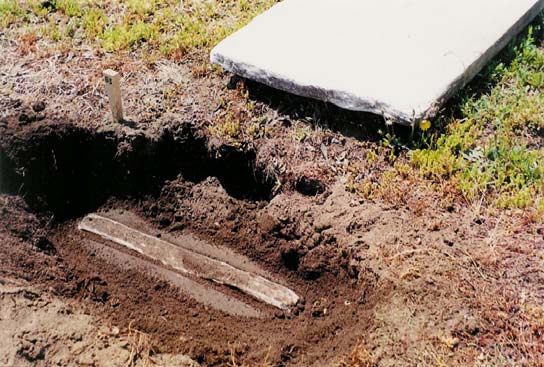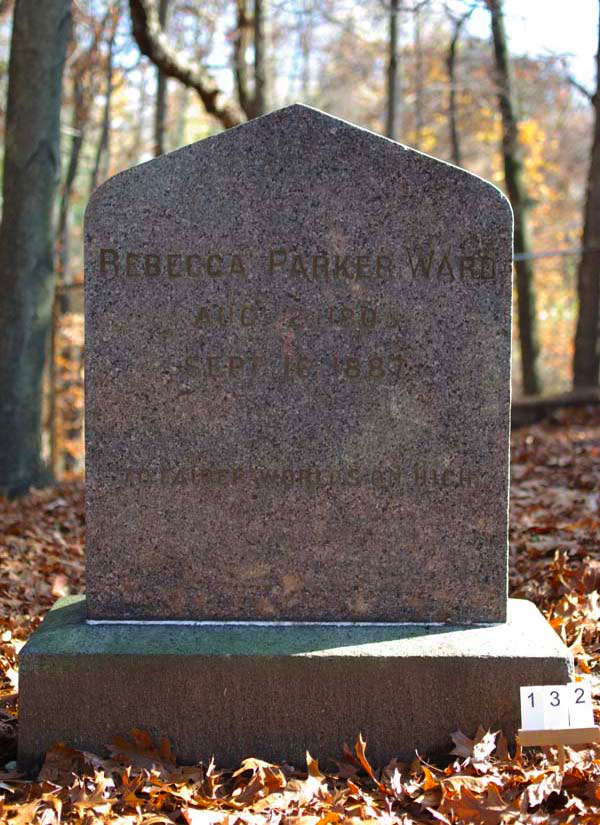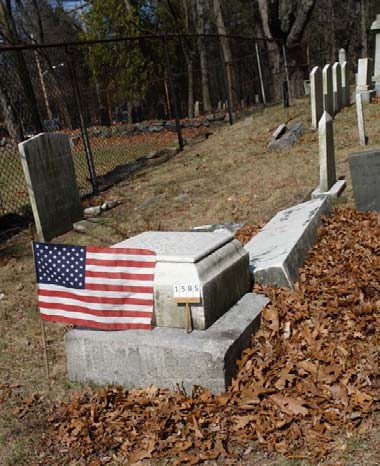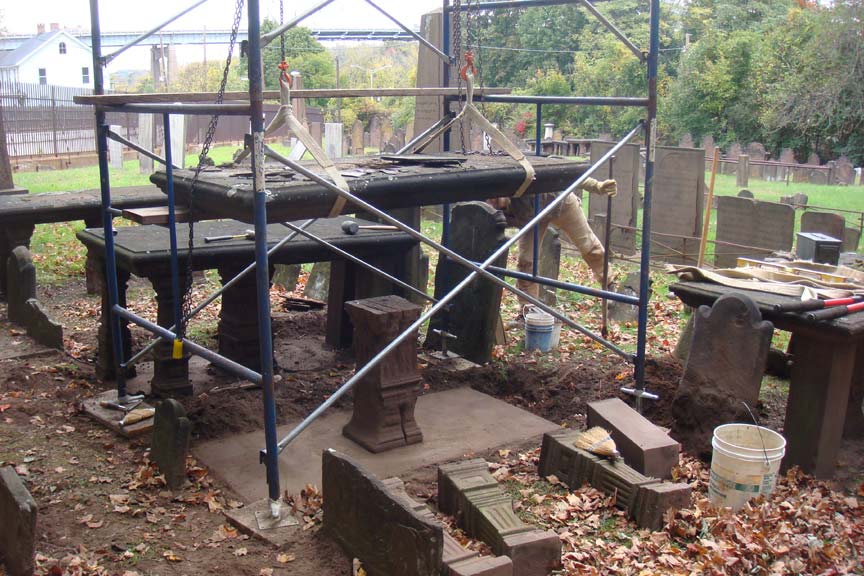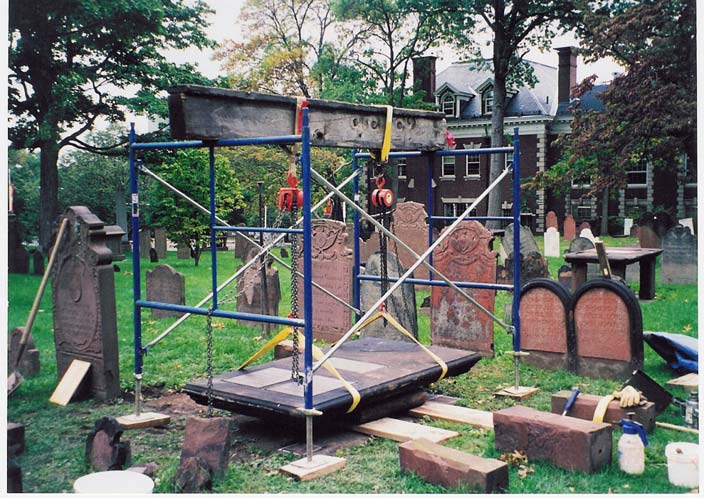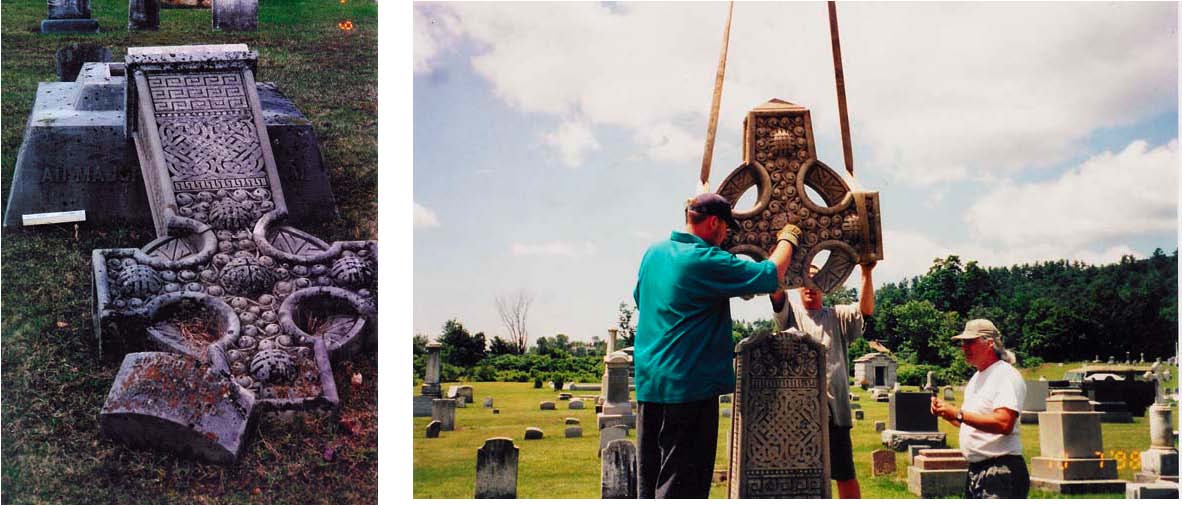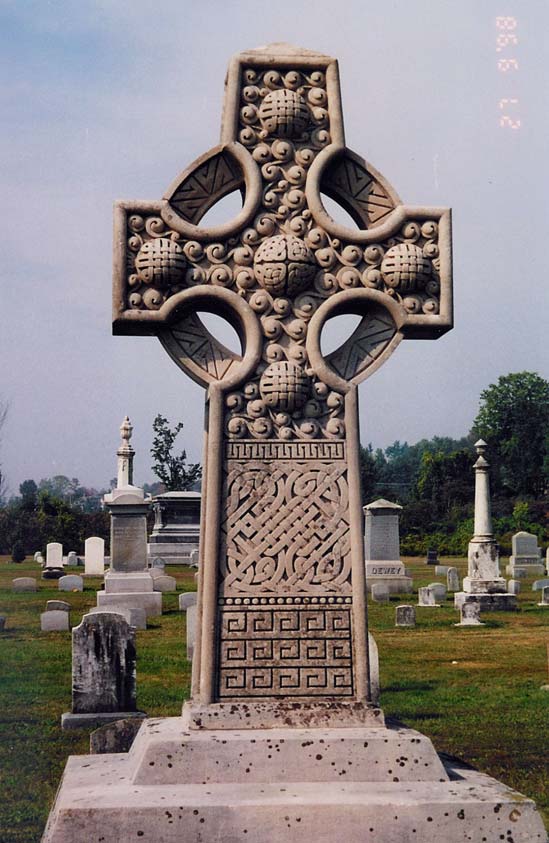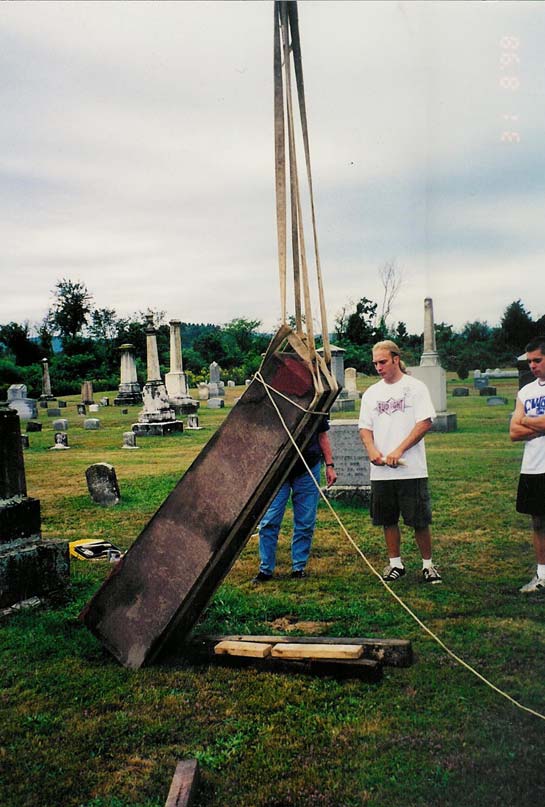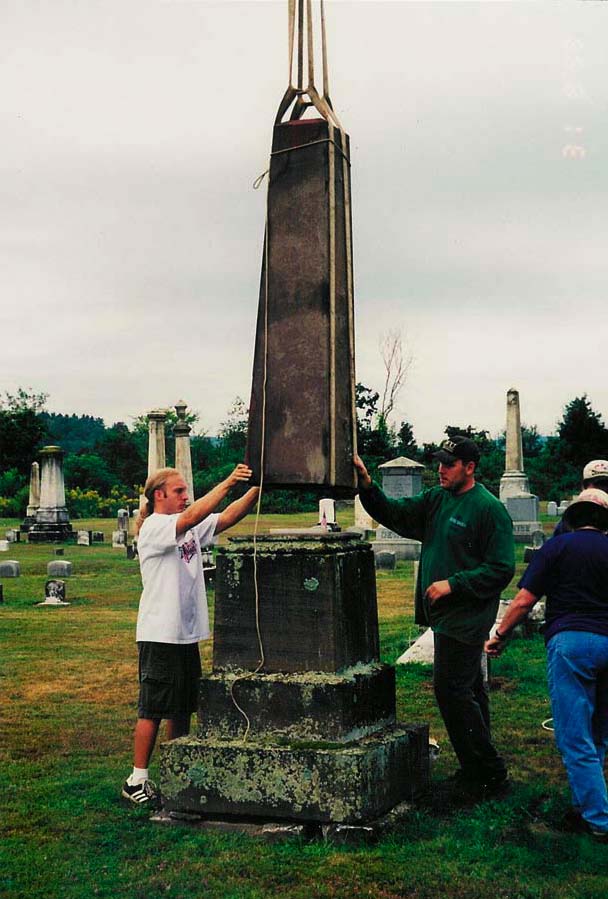Fallen/tilted and overgrown markers 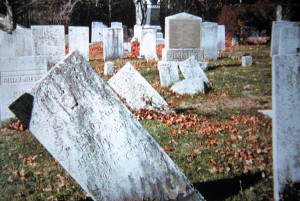 These are markers that are out of the ground, off of their bases, or extremely tilted (> 15° from vertical). Apart from being a trip hazard they are particularly susceptible to physical damage from the use of grounds maintenance equipment. This is the most common condition found in historic cemeteries.
These are markers that are out of the ground, off of their bases, or extremely tilted (> 15° from vertical). Apart from being a trip hazard they are particularly susceptible to physical damage from the use of grounds maintenance equipment. This is the most common condition found in historic cemeteries.
Earlier gravestones are typically long panels of stone that were set directly into the ground. When these markers are tilted, it is can be due to encroaching tree roots, frost heaves, or other ground conditions. If they are not fractured below grade they can be reset relatively easily.
After determination of the correct location and orientation of the stone, soil is removed to an appropriate depth. Gravel (or broken stone) is introduced to establish a stable base. The stone is made plumb and level, and set in plane with the adjacent markers. Backfilling is done with sand and gravel, wetted and compacted. More typically, these leaning panels have been broken at or below grade, and there is not adequate length remaining to reset as above. This condition is not discovered until excavation work has begun. To reset properly they will need to be reset into new, below grade bases.
More typically, these leaning panels have been broken at or below grade, and there is not adequate length remaining to reset as above. This condition is not discovered until excavation work has begun. To reset properly they will need to be reset into new, below
grade bases.
Re-setting New Bases
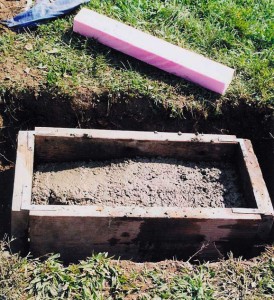
Bases are made on site by casting in place with concrete. The casting is generally 9 to 12 inches deep. The finished top surface of the base should be entirely below grade. A form for a setting slot is positioned in the wet concrete.
After the base has cured, the gravestone is reset into the slot with a relatively weak cement/lime-based mortar and the top of the new base is covered with existing topsoil.
A new below-grade base is also fabricated when an original base could not be located, or the existing base was damaged beyond repair.
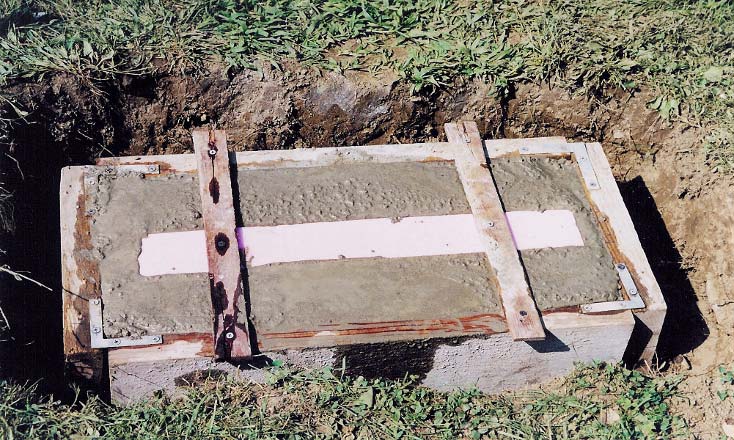
Re-setting – Original Bases
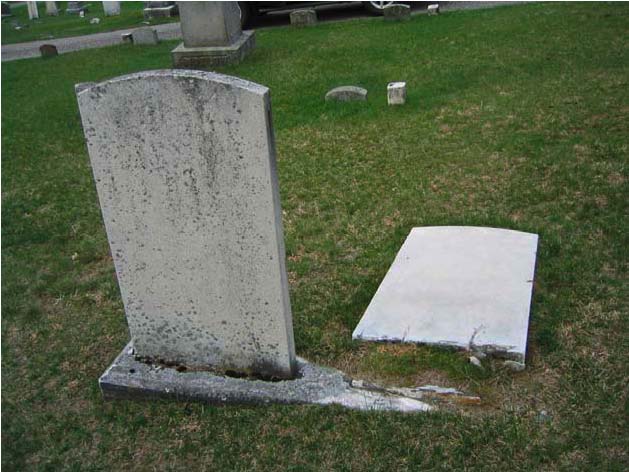
By the early 19th century, it appears that many gravestones were made shorter in length, and were set into or onto bases. Markers that have fallen out of their original bases, (bases either below grade or above grade) can be reset after leveling the base and clearing debris from setting slot.
Many original bases of fallen or overgrown markers become completely overgrown and are now out of sight. During excavation many of these original bases are often found and can be reset level.
Re-setting into or on existing Bases

For resetting onto existing bases, any failed mortar is removed and setting surfaces are cleaned. Any existing pins are examined, and if necessary, they are replaced with threaded stainless rods. For slotted bases the grout is made fluid with a high-range water reducer. This is poured or injected into the base slot. Stones are braced for a minimum of three days to limit movement during curing of the grout.
RE-SETTING – Larger monuments
Larger monuments are reset using scaffolding with chain hoists and, if necessary, hydraulic jacks. Elements are reset using a weak cement/lime based mortar or a setting compound.
Historically these older monuments have very deep dry laid stone foundations which can shift due to frost heaves or encroaching tree roots. With adequate drainage and good ground conditions they can remain stable for many years.

An extremely hazardous monument being lifted with chain hoist Williamstown, MA
The tight quarters of these fallen table-stones requires careful planning and attention to adjacent markers. Middletown CT and Hartford CT.
When there is room, and a number of large monuments to be re-set, an overhead crane can be very helpful and cost effective. Tornado damage, Great Barrington, MA
Careful and experienced rigging is necessary when hoisting (and setting) large monuments. Tornado damage, Great Barrington, MA

